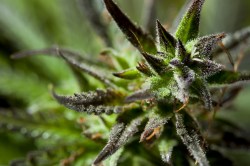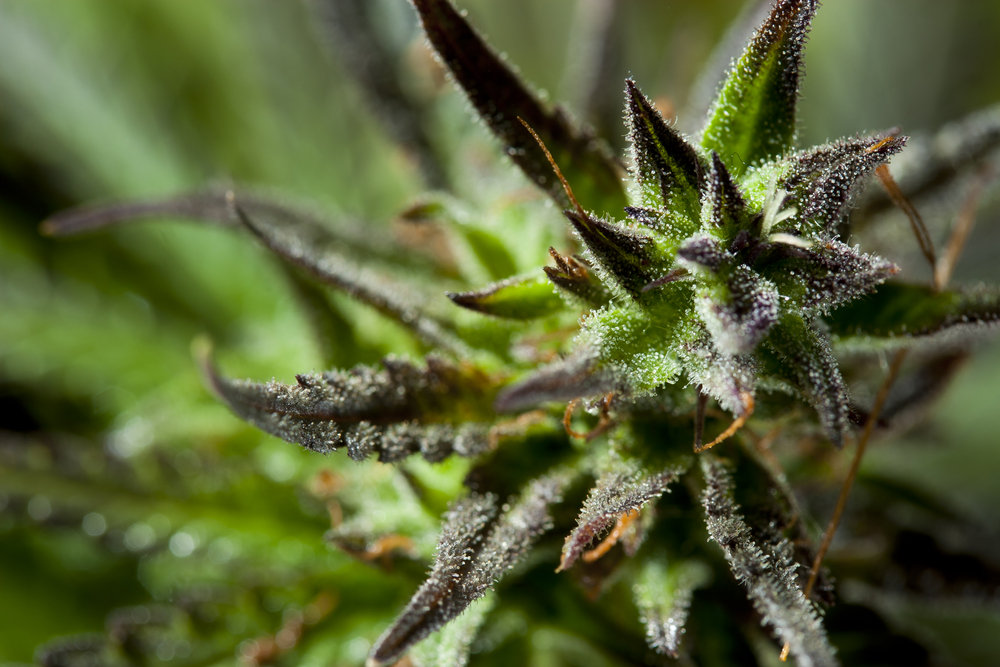
ShutterstockPot: not so green.
We’ve written before about the environmental damage done by marijuana growers — massive energy consumption, indiscriminate pesticide use, dead little forest critters, both cute and uncute. Now the L.A. Times reports that pot growers in California are also undermining salmon recovery efforts, poisoning bears, and even threatening our BFFs: dogs.
The marijuana boom that came with the sudden rise of medical cannabis in California has wreaked havoc on the fragile habitats of the North Coast and other parts of California. With little or no oversight, farmers have illegally mowed down timber, graded mountaintops flat for sprawling greenhouses, dispersed poisons and pesticides, drained streams and polluted watersheds.
Because marijuana is unregulated in California and illegal under federal law, most growers still operate in the shadows, and scientists have little hard data on their collective effect. But they are getting ever more ugly snapshots.
Here’s the bad news about salmon:
State scientists, grappling with an explosion of marijuana growing on the North Coast, recently studied aerial imagery of a small tributary of the Eel River, spawning grounds for endangered coho salmon and other threatened fish.
In the remote, 37-square-mile patch of forest, they counted 281 outdoor pot farms and 286 greenhouses, containing an estimated 20,000 plants — mostly fed by water diverted from creeks or a fork of the Eel. The scientists determined the farms were siphoning roughly 18 million gallons from the watershed every year, largely at the time when the salmon most need it.
“That is just one small watershed,” said Scott Bauer, the state scientist in charge of the coho recovery on the North Coast for the Department of Fish and Game. “You extrapolate that for all the other tributaries, just of the Eel, and you get a lot of marijuana sucking up a lot of water.… This threatens species we are spending millions of dollars to recover.”
And the bad news about bears:
Mark Higley, a wildlife biologist on the Hoopa Indian Reservation in eastern Humboldt …, is incredulous over the poisons that growers are bringing in.
“Carbofuran,” he said. “It seems like they’re using that to kill bears and things like that that raid their camps. So they mix it up with tuna or sardine, and the bears eat that and die.”
And the bad news about dogs:
Scientists suspect that nutrient runoff from excess potting soil and fertilizers, combined with lower-than-normal river flow due to diversions, has caused a rash of toxic blue-green algae blooms in the North Coast rivers over the last decade.
The cyanobacteria outbreaks threaten public health for swimmers and kill aquatic invertebrates that salmon and steelhead trout eat. Now, officials warn residents in late summer and fall to stay out of certain stretches of water and keep their dogs out. Eleven dogs have died from ingesting the floating algae since 2001.
Though California has yet to follow Colorado and Washington in legalizing pot, “[m]arijuana is, as a practical matter, already legal in much of California,” reports The New York Times, so common that it doesn’t even raise eyebrows. Gavin Newsom, California’s lieutenant governor and a likely future gubernatorial candidate, says the laws against marijuana “just don’t make sense anymore”; he’s now calling for legalization.
But with the federal government still resolutely anti-weed, even many growers in states where marijuana is legal are likely to stay in the shadows and keep using shadowy growing techniques — so get used to bad news.



